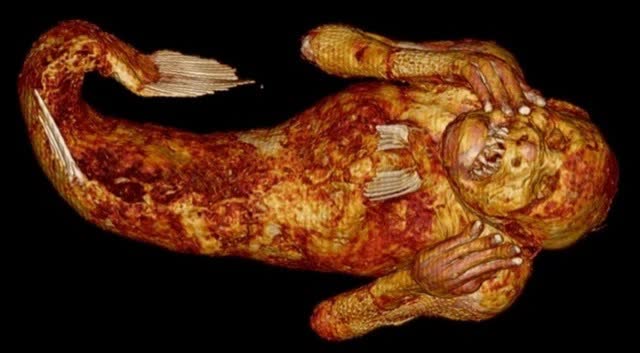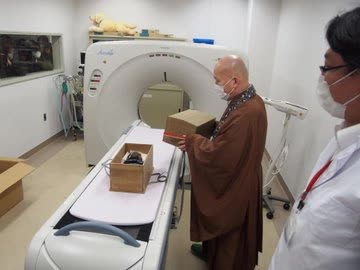The results came after a year of research with all the procedures from X-rays, CT scans, DNA analysis to radiocarbon dating.
Just as dragons in Japanese legends look different from European dragons, mermaids in Japan also look very different from what you usually see in Disney cartoons.
The ningyo (literally translated as “mermaids”) of Japan are often depicted not with the torso of a supermodel, but as a smaller, almost monkey-like figure. And if you’re having trouble picturing a ningyo, the video below will either help or give you nightmares tonight.
Uncovering the secret of mermaid mummies in Japan
In the video is one of the treasures kept at Enjuin Temple in Asakuchi town, Okayama province, Japan. According to an accompanying handwritten note preserved, it is the mummy of a ningyo that was caught in a fisherman’s net in the waters off Tosa, in present-day Kochi Prefecture, during the Genbun era, which lasted from 1736. to 1741 in Japan.
However, no one is sure exactly how the temple came to possess this mummy of a mermaid. Therefore, in February last year, a team of five researchers from Kurashiki University of Science and Arts, also in Okayama, began an investigation to determine the true identity of the artifact. They use modern testing methods such as X-rays, CT scans, DNA analysis and even radiocarbon dating.

Mermaid mummy at Enjuin temple.
And after a year of research, the team recently announced their results. And unfortunately for fans of the legends, it turns out it’s not actually a mermaid. The team said they saw something was wrong when the only real bone structure they could confirm was the jawbone, as the “ningyo” was only 30 centimeters long and had no skull, spine or spine. ribs.
Next, the investigation discovered that this ancient artifact was made from plaster or a plaster-like substance. They have been molded into physical features including arms, hands and eye sockets. The upper body, which also has parts made of fabric, is wrapped in a thin sheet of paper, which is then wrapped in fugu (a type of puffer fish) skin. The head is also made of fabric and stuffed with some unknown animal hair.
Meanwhile, the scales and fins on the lower body seem to belong to a croaker fish. Even the artifact found in a fisherman’s net around 1740 appears to have been a hoax, as researchers, after examining some scales that had fallen from the lower part of the body, calculated that the body The ningyo is most likely from the second half of the 1800s.


Scientists have confirmed that this is a fake mummy.
However, the temple administrators were not upset that they had been deceived. Speaking after the researchers announced the results, abbot Hiroyoshi Kuida said: “I think, because of the story itself, many people came to see the ningyo when it was on display and prayed while they were here. And I think they will continue to do so.”
“Knowing that it is made from living organisms, we will continue to take good care of it and keep it safe,” he added.
Thankfully, ningyo does not carry any special religious significance in Japanese Buddhism. So the revelation that the treasures at Enjuin Temple are not real will not cause any crisis of confidence or reduce the number of visitors to this temple.





